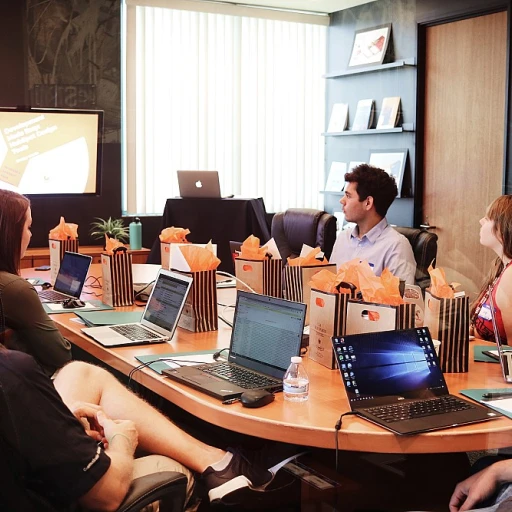
Understanding the Role of Office Management Software
The Backbone of Modern Workplaces
In today’s fast-paced business environment, office management software has become the backbone of modern workplaces. It serves as a comprehensive tool that streamlines various administrative tasks, enabling office managers to focus on strategic initiatives rather than getting bogged down by routine operations. This software is not just about managing tasks; it’s about enhancing the overall efficiency of the office space.
Streamlining Tasks and Projects
Office management software offers a suite of features designed to streamline tasks and projects. From task management to project management, these tools help in organizing work efficiently. They allow team members to collaborate in real time, ensuring that everyone is on the same page. This is particularly beneficial in hybrid work environments where teams are spread across different locations.
Enhancing Collaboration and Communication
Effective communication is crucial for any business, and management software provides the best tools for fostering collaboration among employees. Features like shared calendars, meeting room bookings, and visitor management systems ensure that office managers can coordinate activities seamlessly. This not only saves time but also enhances the productivity of the entire team.
Optimizing Resource Allocation
Resource allocation is another critical area where office management software excels. By providing insights into how resources are being utilized, these systems help businesses make informed decisions. Whether it’s managing office space or tracking the time spent on various tasks, the software offers valuable data that can be used to optimize operations.
Choosing the Right Software
With numerous options available, selecting the right office management software can be daunting. It’s essential to look for features that align with your business needs. Some software tools offer a free plan, allowing businesses to test their capabilities before committing. For office managers, understanding the essential qualifications for a front office manager in an Indian company can also guide the selection process. For more insights, you can explore essential qualifications for a front office manager in an Indian company.
Challenges Faced by Office Managers in India
Overcoming Barriers in Office Management
Office managers in India often face a labyrinth of challenges while ensuring the smooth functioning of their workplaces. These can bridge multiple aspects such as coordinating among diverse teams, managing limited office space, and adopting efficient office management tools.- Coordinating Multiple Teams: One of the central dilemmas is overseeing several departments and ensuring effective collaboration and communication. Office managers need to facilitate seamless interaction among team members, especially in hybrid work environments.
- Space Management: Office space constraints require judicious management of meeting rooms, workstations, and visitor management systems. Efficient management software can optimize these areas to accommodate all employees adequately.
- Time Management: Balancing tasks between urgent duties and everyday operations is another significant hurdle. Time tracking and task management tools are indispensable in such scenarios, as they help in monitoring real-time progress of ongoing projects.
- Integration of Tools: Finding the best management system that integrates existing software tools can save on costs and increase productivity. Free plans are often sought but may lack essential features.
Key Features to Look for in Office Management Software
Essential Features to Boost Office Efficiency
When navigating the broad landscape of office management tools, honing in on the key features that align with your team's needs is crucial. The best software tools empower office managers with the capability to streamline everyday tasks, ensuring a smooth flow of operations in the workplace.- Robust Task Management: An efficient office management system should offer task management functionalities that allow office managers to allocate tasks seamlessly across their teams. Real-time updates and centralized task tracking help team members stay informed and coordinated, minimizing any risk of task duplication or oversight.
- Integrated Project Management Tools: A significant advantage of having robust management software is its integration with project management features. This allows teams to oversee projects from inception to completion, fostering collaboration while ensuring that deadlines and project milestones are met effectively.
- Time Tracking Capabilities: With hybrid work environments becoming the norm, having reliable time tracking tools is essential. Management software equipped with time tracking features can help monitor employee productivity and workplace attendance, thus optimizing team efficiency and ensuring that resources are utilized effectively.
- Meeting Room and Space Management: Optimizing office space is vital, especially in hybrid or shared office models. Features that facilitate the easy booking and management of meeting rooms can eliminate scheduling conflicts and enhance overall office space management.
- Visitor Management Solutions: In a busy office environment, seamlessly managing office visitors is paramount. Office management software that offers visitor management tools enhances the security and efficiency of entry and exit protocols, ensuring that guest interactions are smooth and professional.
Case Studies: Success Stories from Indian Companies
Real-World Benefits of Implementing Management Software
In the dynamic business landscape of India, office management software has emerged as a pivotal tool that transforms workplace efficiency. Real-world case studies from several Indian companies highlight the tangible benefits of leveraging such innovative solutions. When one Indian IT firm integrated office management software, it witnessed remarkable improvements. The software's project management features enabled the firm to streamline tasks, effectively manage meetings, and optimize collaboration among team members. By centralizing work systems and enabling real-time updates, employees could easily track progress, leading to enhanced productivity. In a multinational corporation with multiple office spaces across India, the adoption of space management tools brought a significant reduction in overhead costs. The management system optimized the use of meeting rooms and office spaces, eliminating the problem of double bookings and underutilized areas. Similarly, visitor management features provided an added layer of security and efficiency at office entrances. A local manufacturing business benefited immensely from implementing a task management solution. In an environment where project timelines are crucial, the ability to assign tasks with clear deadlines and track time effectively was a game-changer. Teams were better aligned, and project delays were drastically reduced, thus ensuring a smoother business operation. These success stories reflect how the best office management software and tools facilitate seamless workflow management, promoting a hybrid work culture by providing versatile solutions that cater to both in-office and remote work environments. As office managers continue to seek out the best systems for integration, these case studies illustrate the transformative power of modern software tools in overcoming challenges faced by Indian companies.Integrating Office Management Software with Existing Systems
Integration Strategies for Seamless Office Management
Efficient integration of office management software into existing systems is crucial for maximizing its potential. Many Indian companies are already experiencing significant benefits by merging these modern software solutions with their current operations, leading to optimized workflows and increased productivity. To ensure a smooth transition, it is essential for office managers and their teams to follow these strategies:- Evaluate Current Systems: Conduct a thorough assessment of current management tools and platforms. This helps in understanding compatibility and identifying any potential integration challenges.
- Select a Flexible Software Solution: Opt for software that supports integration with a variety of systems. This adaptability minimizes disruptions and facilitates a smoother transition. Look for management software that includes features such as task management, real-time collaboration, and time tracking.
- Involve Key Stakeholders: Engage team members in the selection process. Their input can provide valuable insights into what functionalities will best support their roles. This involvement also encourages buy-in and eases the adoption phase.
- Prioritize Data Security and Integrity: Securely migrating data is crucial when integrating new systems. Utilize strong encryption and follow best practices to ensure that sensitive information remains protected throughout the process.
- Provide Ongoing Training and Support: Continuous education for employees and office managers on how to effectively use the new software and its tools can enhance productivity and satisfaction. Regular workshops or training sessions can address any concerns or hurdles experienced.
- Monitor and Adjust: Post-integration, keeping an eye on how the management system performs can reveal areas needing adjustment. Regular feedback from employees and stakeholders will help refine the system’s functionality, ensuring the best office management experience.













